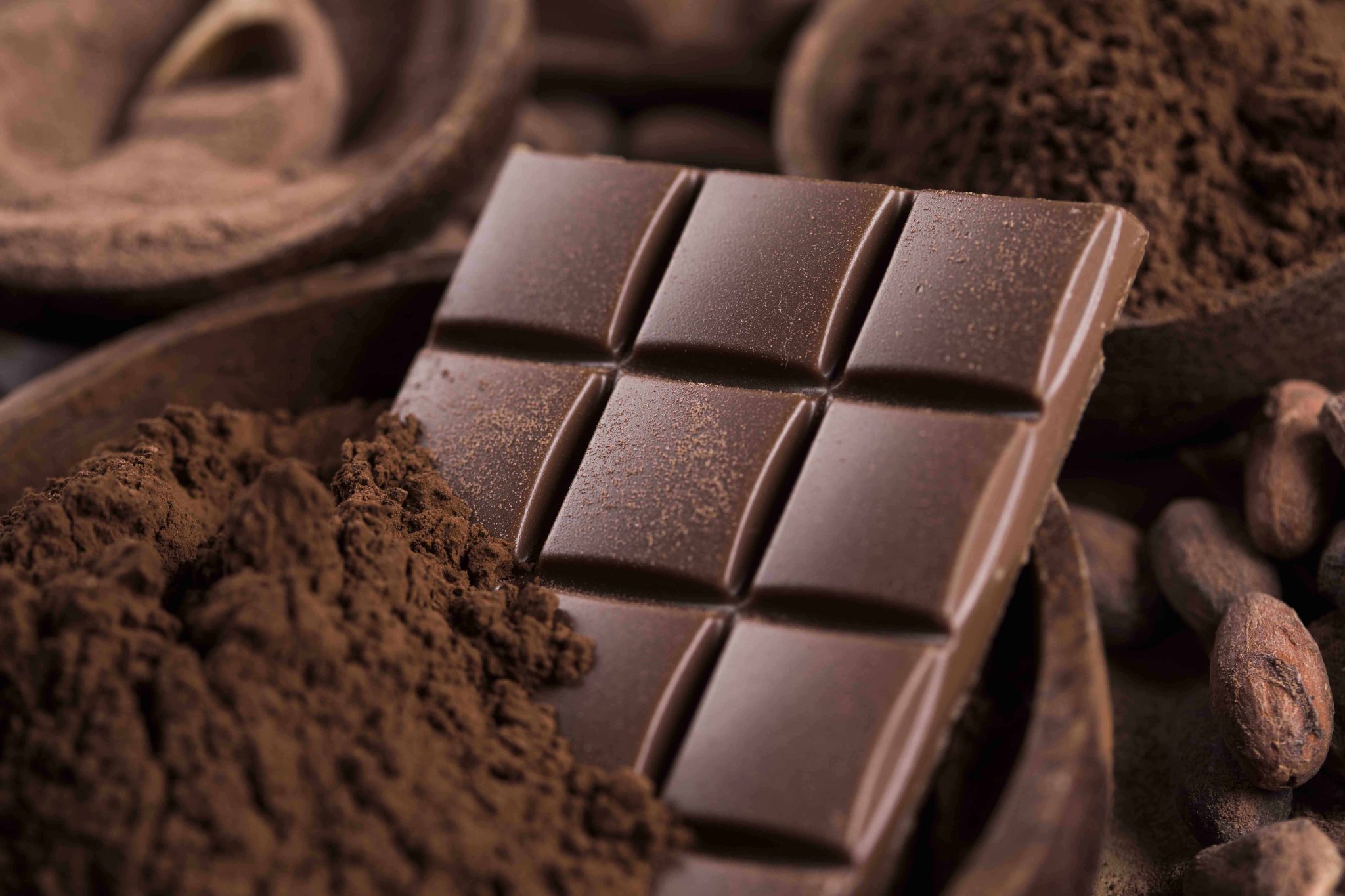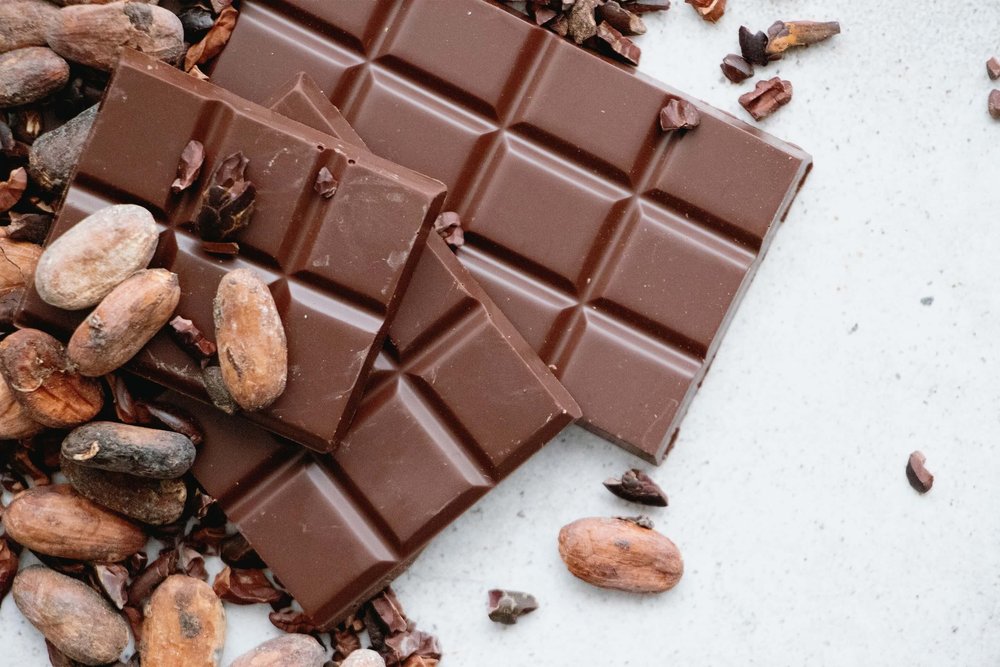Here are some fascinating facts about chocolate:
- Many believe that chocolate is an aphrodisiac, possibly due to the simple sensual pleasure of its consumption. Scientists suggest that theobromine and other chemicals act as mild sexual stimulants. But we all know chocolate will win their hearts.
- The word “Chocolate” comes from the Aztec word “xocolatl,” meaning “bitter water.”
- While Switzerland and Belgium are famous for their chocolate, they do not produce cacao. In contrast, not many people know that Indonesia has cacao plantations. Yes! We, Indonesians, do harvest cacao.
- Indonesia is, in fact, the world’s third largest cacao producer after Ivory Coast in Africa (38%) and Ghana in Africa (19%). Indonesia produces 18% of the world’s cacao, which equals about 600,000 tons of cocoa a year (based on 2010 documentation).
- Chocolate is often hailed as The Food Of The Gods. Cacao beans come from a tree that belongs to the genus Theobroma, which, translated, means “food of the gods.”
- Chocolate is a great natural antidepressant. It contains tryptophan, which helps in the creation of serotonin, your body’s own antidepressant.
- Contrary to popular belief, chocolate does not contribute to acne. However, the milk in milk chocolate might. Therefore, enjoy the benefits of dark chocolate.
- Chocolate is poisonous to dogs (and other domestic animals) due to the presence of Theobromine, a stimulant that can be overwhelming for small animals.
- Chocolate contains high quality antioxidants that can protect you from developing cancer and heart disease.
- Chocolate is rich in magnesium and iron, both essential for your body’s needs.
- Chocolate makers use 40% of the world’s almonds and 20% of the world’s peanuts.
- Chocolate’s melting point is just below your body temperature, causing it to melt in your mouth. Melting chocolate in your mouth raises brain activity and heart rate more intensely than passionate kissing and lasts four times longer!
More About Chocolate
Do you have questions about chocolate? We answer them here. If you have a question you’d like answered, please contact us!
Questions and Answers
- What does the percentage of cacao content mean?
The cacao content refers to the total cacao content in the chocolate, comprising everything derived from the cocoa bean, including chocolate liquor, cocoa butter, and cocoa powder. For instance, in our 60% Cacao SCHOKO Couverture Chocolate, the 60% cacao content consists of cocoa butter and chocolate liquor, with the remaining 40% composed of sugar, vanilla, and other ingredients.
- Is higher cacao content always better?
Not necessarily. The cacao content indicates the intensity or sweetness of the chocolate. Preferences for higher cacao content chocolate may vary from person to person or over time. SCHOKO offers a 100% Cacao Unsweetened Baking Chocolate, the highest cacao content possible. However, it’s more suitable for baking than eating due to its extreme bitterness without any added sugar.
- Can I compare SCHOKO 60% Cacao Dark Chocolate with other companies’ 60% Cacao Dark Chocolate?
Not necessarily. Differences in cacao bean selection and origin can result in distinct flavors. Each cocoa grown in specific regions possesses unique characteristics due to local weather and soil conditions, affecting the chocolate’s flavor. For instance, a chocolate made from more cocoa powder may not yield as intense a chocolate flavor.
- Is cacao percentage the main indicator of quality?
The cacao percentage determines chocolate intensity, but quality is influenced by various factors, including cocoa bean quality, selection, and the manufacturing process.
- Why do I need to know the cacao percentage?
Knowing the cacao percentage helps select chocolate to satisfy specific cravings. Higher cacao content chocolate tends to be less sweet and offers a more intense chocolate flavor.
- Is a bean blend or single origin better?
A proprietary blend of bean varieties allows SCHOKO to achieve a specific taste consistently. Singleorigin chocolate may vary yearly based on the crop, while SCHOKO uses a blend of fermented cocoa beans from Criollo and Trinitario varieties for a distinct and intense taste.
- What is the difference between “cacao” and “cocoa”?
Historically, “cacao” refers to the bean, while “cocoa” is used for powder products. Technically, “cocoa” should reference powders, while “cacao” refers to the bean, containing chocolate liquor, cocoa butter, and cocoa powder.
- What is “dutched” cocoa?
Dutched cocoa undergoes a process reducing acidity and resulting in milder chocolate flavors. The process can also alter color from light red to brown or black. Dutched cocoa is suitable for chocolate items like devil’s food cake or brownies.
- What is cocoa butter?
Cocoa butter is a natural fat present in cocoa beans obtained by pressing unsweetened chocolate or “chocolate liquor.” It’s not a dairy product, as sometimes thought.
- What is Soy Lecithin?
Soy lecithin, derived from soybeans, is a natural emulsifier added to chocolate to maintain an emulsion between cocoa butter and sugar.
- Is Chocolate Liquor alcohol?
Chocolate liquor is the groundup center (nib) of the cocoa bean, also known as unsweetened chocolate, in a smooth, liquid form. It contains no alcohol.
- How much caffeine is in chocolate?
Chocolate contains very low caffeine. A 40gram piece of milk chocolate has the same caffeine content as a cup of decaffeinated coffee.
- When I open a chocolate bar and see dryness and white spots, what does that mean?
That’s usually “bloomed” chocolate due to exposure to temperature changes. Although it might look unpleasant, it’s safe to eat.
- What’s the difference between chocolate and chocolates?
It is not just about “s”. “Chocolate” refers to the actual substance, while “chocolates” in plural usually refers to chocolate candies like truffles, chocolate creams, and chocolate covered nuts. “Chocolates” are candies made from chocolate.





